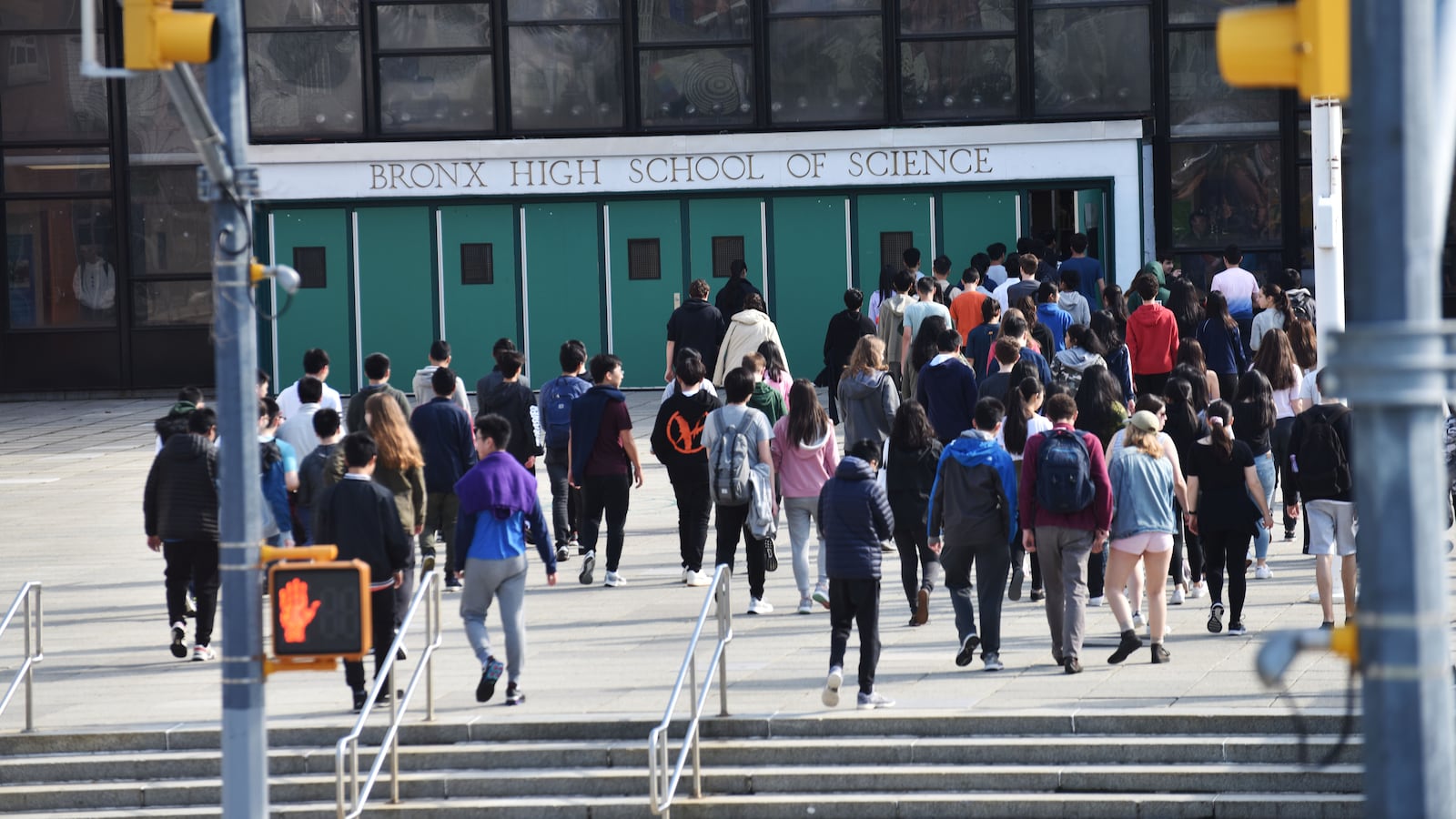The mayor’s plan to diversify specialized high schools would likely work as intended, a new report has found, but there’s a catch: It could intensify academic sorting and reduce the number of black and Hispanic students at other high-demand city high schools.
Published by the Center for New York City Affairs, a research arm at The New School, the report says that if the mayor’s plan had been in effect during the 2017-18 high school application cycle, students who no longer met the new requirements for specialized high schools would be concentrated at a subset of other competitive city high schools. As a result, those schools could become less diverse and even tougher to get into, the study projects.
“That would up the ante at those schools — it would raise the bar for academic qualifications at those schools even more,” said Nicole Mader, a senior research fellow at the Center for New York City Affairs and one of the researchers behind the report.
Intense debate has brewed over the past year in response to de Blasio’s proposal to overhaul admissions at eight specialized high schools, including Stuyvesant and Bronx Science. His plan, created in response to years of concern over how few black and Hispanic students were admitted to the specialized high schools, would admit the top 7% of students at each city middle school. Currently, the sole criteria for getting in is a high score on the SHSAT exam. The mayor’s proposal alarmed some Asian and white parents who fear their children — who received most of the offers this year to specialized high schools — could be unfairly elbowed out.
Since the admissions exam is enshrined in state law for the three elite specialized schools that enroll the most students, the mayor’s plan needs approval from Albany. But state legislators have been largely reluctant to tackle the issue beyond public hearings and internal debates.
If the plan were ever implemented, the report found it would diversify the specialized schools and connect newly enrolled students with more academic opportunities than they would have otherwise had, such as increased access to Advanced Placement courses. Also, the students who would no longer be offered a space at one of those elite schools would still be likely to end up at another top-performing high school.
But it could reduce the number black and Hispanic students who attend the rest of the city’s high-demand high schools.
Researchers used high school application data to create a model where the mayor’s plan was fully implemented during the 2017-18 academic year. Based on that, they looked at which students would have qualified for specialized high schools had de Blasio’s plan been in effect at the time and which ones would no longer be eligible.
Based on that, almost 3,100 students who didn’t take the SHSAT or didn’t earn a high enough score would get offers to the schools. Another 2,467 students who scored high enough on the exam to have been admitted under the current model would no longer be eligible for the specialized high schools; instead, they would have been matched to 151 different schools, with researchers assuming that every student attends the school they get matched with.
For example, 199 students who got into specialized high schools using the current criteria but who wouldn’t have gotten in under de Blasio’s plan, were matched to NEST+M; the same was true for 115 students matched to Midwood High School. These are indications that some sought-after schools are likely to grow even more competitive — and have slightly lower percentages of black, Hispanic, and female students, and those from low-income families. The percentage of Asian students at these schools would likely increase, according to the report’s projections, while the number of white students wouldn’t change.
“This would raise the academic qualifications required to get a seat even higher, crowding out students who would traditionally have been admitted, but have slightly lower scores,” the report states.
At the same time, 82 percent of non-specialized high schools would lose one or more “high-achieving” student to the specialized high schools. Most of these schools, such as Townsend Harris High School in Queens, are also screened, but their student bodies more closely resemble neighborhood demographics. While losing students wouldn’t really change their demographics, “the loss of so many high-achieving students might have had a significant influence on the students left behind,” the report said.
Asked for comment on the report and its findings about non-specialized high schools, education department spokesman Will Mantell said it’s “another independent confirmation that our proposal will expand opportunity for top-performing middle-school students, increase diversity, and maintain the academic rigor of our specialized high schools.”
It’s unclear how the specialized high schools plan will fare next legislative session — and how intensely the city will lobby in Albany for admissions changes. But it’s good to remember the ripple effects, Mader said.
“This is sort of an opportunity to say any changes to admissions does affect the whole system,” Mader said.

